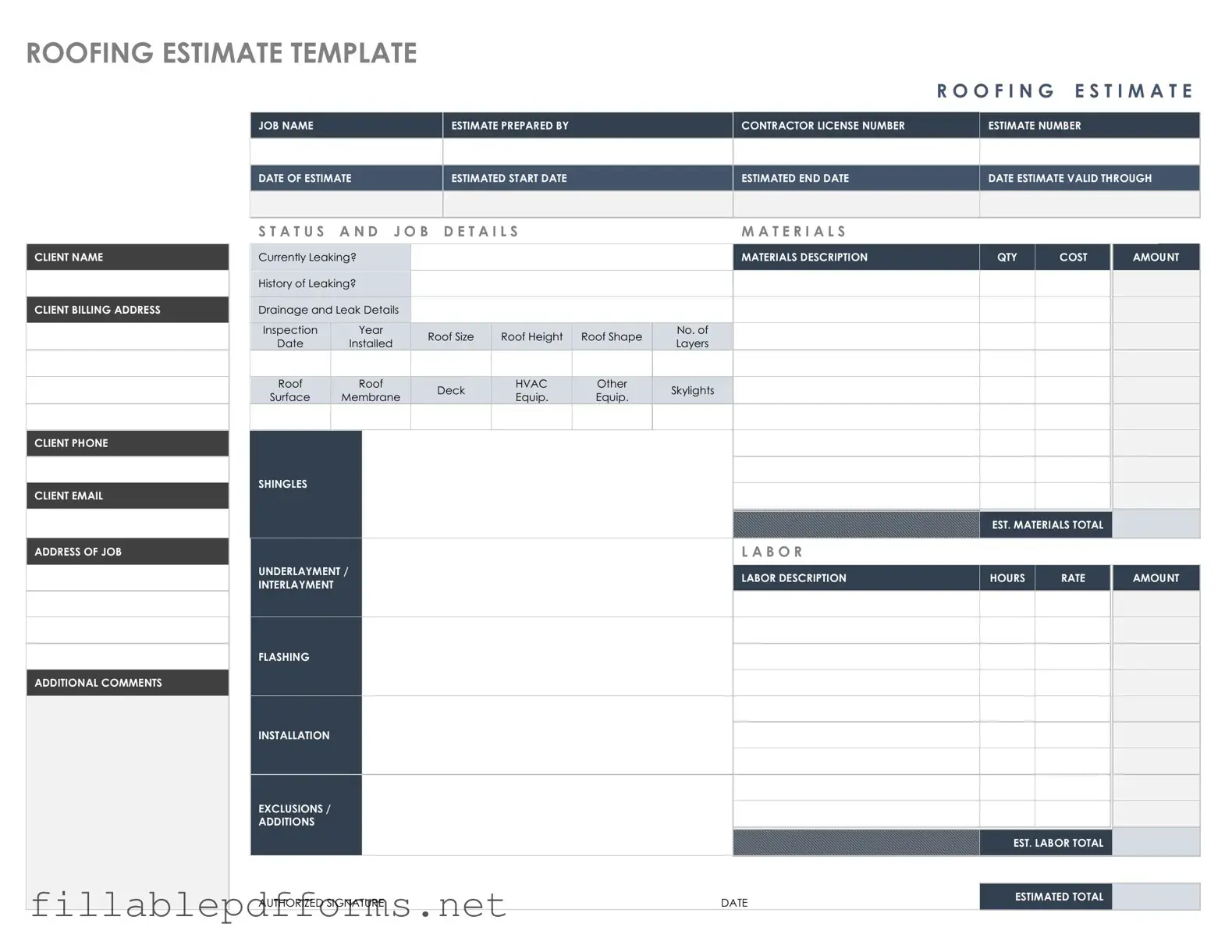When embarking on a roofing project, understanding the roofing estimate form is crucial for homeowners and contractors alike. This essential document not only outlines the projected costs associated with materials and labor but also includes vital details such as project timelines and the scope of work. Homeowners can expect to see a breakdown of different roofing materials, labor rates, and any additional fees that may arise during the project. Additionally, the form often features sections for the contractor's information, allowing for transparency and accountability. By carefully reviewing this estimate, homeowners can make informed decisions, ensuring they choose a contractor who meets their needs while staying within budget. Ultimately, a well-structured roofing estimate form serves as a roadmap for both parties, guiding the project from initial planning to successful completion.
